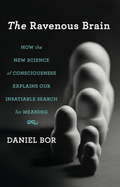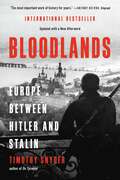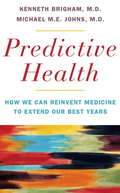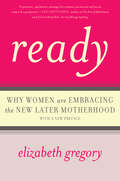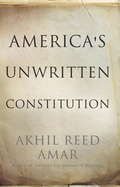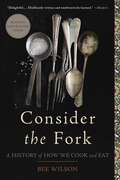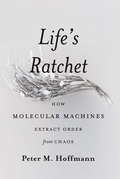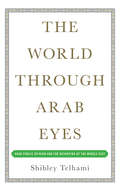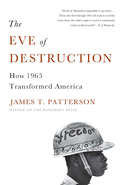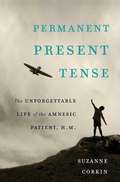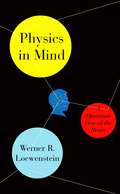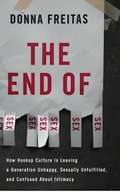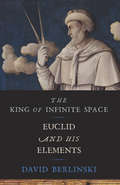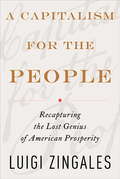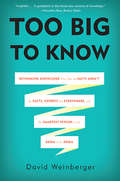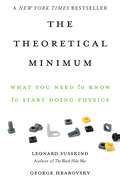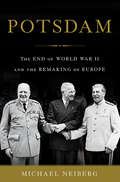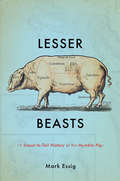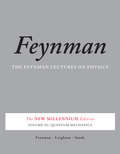- Table View
- List View
The Ravenous Brain: How the New Science of Consciousness Explains Our Insatiable Search for Meaning
by Daniel BorConsciousness is our gateway to experience: it enables us to recognize Van Gogh&’s starry skies, be enraptured by Beethoven&’s Fifth, and stand in awe of a snowcapped mountain. Yet consciousness is subjective, personal, and famously difficult to examine: philosophers have for centuries declared this mental entity so mysterious as to be impenetrable to science. In The Ravenous Brain, neuroscientist Daniel Bor departs sharply from this historical view, and builds on the latest research to propose a new model for how consciousness works. Bor argues that this brain-based faculty evolved as an accelerated knowledge gathering tool. Consciousness is effectively an idea factory—that choice mental space dedicated to innovation, a key component of which is the discovery of deep structures within the contents of our awareness. This model explains our brains&’ ravenous appetite for information—and in particular, its constant search for patterns. Why, for instance, after all our physical needs have been met, do we recreationally solve crossword or Sudoku puzzles? Such behavior may appear biologically wasteful, but, according to Bor, this search for structure can yield immense evolutionary benefits—it led our ancestors to discover fire and farming, pushed modern society to forge ahead in science and technology, and guides each one of us to understand and control the world around us. But the sheer innovative power of human consciousness carries with it the heavy cost of mental fragility. Bor discusses the medical implications of his theory of consciousness, and what it means for the origins and treatment of psychiatric ailments, including attention-deficit disorder, schizophrenia, manic depression, and autism. All mental illnesses, he argues, can be reformulated as disorders of consciousness—a perspective that opens up new avenues of treatment for alleviating mental suffering. A controversial view of consciousness, The Ravenous Brain links cognition to creativity in an ingenious solution to one of science&’s biggest mysteries.
Bloodlands: Europe Between Hitler and Stalin
by Timothy SnyderFrom the bestselling author of On Tyranny, the definitive history of Hitler's and Stalin's wars against the civilians of Europe in World War TwoAmericans call the Second World War "The Good War."But before it even began, America's wartime ally Josef Stalin had killed millions of his own citizens--and kept killing them during and after the war. Before Hitler was finally defeated, he had murdered six million Jews and nearly as many other Europeans. At war's end, both the German and the Soviet killing sites fell behind the iron curtain, leaving the history of mass killing in darkness. Bloodlands is a new kind of European history, presenting the mass murders committed by the Nazi and Stalinist regimes as two aspects of a single history, in the time and place where they occurred: between Germany and Russia, when Hitler and Stalin both held power. Assiduously researched, deeply humane, and utterly definitive, Bloodlands will be required reading for anyone seeking to understand the central tragedy of modern history. Bloodlands won twelve awards including the Emerson Prize in the Humanities, a Literature Award from the American Academy of Arts and Letters, the Leipzig Award for European Understanding, and the Hannah Arendt Prize in Political Thought. It has been translated into more than thirty languages, was named to twelve book-of-the-year lists, and was a bestseller in six countries.
Predictive Health: How We Can Reinvent Medicine to Extend Our Best Years
by Kenneth L. Brigham Michael M. JohnsOur health care system is crippled by desperate efforts to prevent the inevitable. A third of the national Medicare budget—nearly 175 billion—is spent on the final year of life, and a third of that amount on the final month, often on expensive (and futile) treatments. Such efforts betray a fundamental flaw in how we think about healthcare: we squander resources on hopeless situations, instead of using them to actually improve health.In Predictive Health, distinguished doctors Kenneth Brigham and Michael M.E. Johns propose a solution: invest earlier—and use science and technology to make healthcare more available and affordable. Every child would begin life with a post-natal genetic screen, when potential risk—say for type II diabetes or heart disease—would be found. More data on biology, behavior, and environment would be captured throughout her life. Using this information, health-care workers and the people they care for could forge personal strategies for healthier living long before a small glitch blows up into major disease. This real health care wouldn&’t just replace much of modern disease care—it would make it obsolete. The result, according to Brigham and Johns, will be a life defined by a long stay at top physical and mental form, rather than an early peak and long decline. Accomplishing this goal will require new tools, new clinics, fewer doctors and more mentors, smarter companies, and engaged patients. In short, it will require a revolution. Thanks to a decade-long collaboration between Brigham, Johns and others, it is already underway.An optimistic plan for reducing or eliminating many chronic diseases as well as reforming our faltering medical system, Predictive Health is a deeply knowledgeable, deeply humane proposal for how we can reallocate expenses and resources to prolong the best years of life, rather than extending the worst.
Ready: Why Women Are Embracing the New Later Motherhood
by Elizabeth GregoryOver the past three decades, skyrocketing numbers of women have chosen to start their families in their late thirties and early forties. Women now have the option to define for themselves when they are ready for a family, rather than sticking to a schedule set by social convention. In Ready, Elizabeth Gregory tracks the burgeoning trend of new later motherhood and demonstrates that waiting to have children has made many women better mothers thanks to increased self-awareness, greater financial power, and an ability to focus more on their families. Drawing on statistical evidence and in-depth interviews with more than 100 moms, Ready shatters the alarmist myths surrounding later motherhood. Without ignoring the complexities older women may face in their quest to have children, Gregory delivers surprising and welcome news that revolutionizes the way we think about motherhood. The 2012 paperback adds a new Preface bringing the data and analysis up to the moment: encompassing discussion of the recessionary birth rate drop among younger women and its longterm effect on the later motherhood trend, the intersections between the War on Women's Reproductive Choice and the US's family-unfriendly policies with the trend to delaying kids, the dynamics of fertility scaremongering, and the competing pro-natalist and anti-natalist pressures on American women today. The Preface also introduces new data from a range of researchers on the positive effects of delay on women's wages, long-term happiness, and political clout. This book examines the full range of pressures shaping women's fertility decisions today, and begins from the assumption that women's choices make sense, for them and for their families.
America's Unwritten Constitution: The Precedents and Principles We Live By
by Akhil Reed AmarAmerica's Unwritten Constitution presents a bold new vision of the American constitutional system, one in which proper interpretation of the Constitution rests on the interplay between its written and unwritten manifestations, but in which interpretation does not, and cannot, depend wholly on one form or the other. Neither America's written Constitution nor its unwritten Constitution stands alone, Amar shows, and with each eye-opening example he develops a deeper, more compelling way of thinking about constitutional law than has ever been put forth before-a methodology that looks past the basic text to reveal the diverse influences, supplements, and possibilities that comprise it.
America's Unwritten Constitution: The Precedents and Principles We Live By
by Akhil Reed AmarDespite its venerated place atop American law and politics, our written Constitution does not enumerate all of the rules and rights, principles and procedures that actually govern modern America. The document makes no explicit mention of cherished concepts like the separation of powers and the rule of law. On some issues, the plain meaning of the text misleads. For example, the text seems to say that the vice president presides over his own impeachment trial -- but surely this cannot be right. As esteemed legal scholar Akhil Reed Amar explains in America's Unwritten Constitution, the solution to many constitutional puzzles lies not solely within the written document, but beyond it -- in the vast trove of values, precedents, and practices that complement and complete the terse text. In this sequel to America's Constitution: A Biography, Amar takes readers on a tour of our nation's unwritten Constitution, showing how America's foundational document cannot be understood in textual isolation. Proper constitutional interpretation depends on a variety of factors, such as the precedents set by early presidents and Congresses; common practices of modern American citizens; venerable judicial decisions; and particularly privileged sources of inspiration and guidance, including the Federalist papers, William Blackstone's Commentaries on the Laws of England, the Northwest Ordinance of 1787, Lincoln's Gettysburg Address, and Martin Luther King, Jr.'s "I Have a Dream" speech. These diverse supplements are indispensible instruments for making sense of the written Constitution. When used correctly, these extra-textual aids support and enrich the written document without supplanting it. An authoritative work by one of America's preeminent legal scholars, America's Unwritten Constitution presents a bold new vision of the American constitutional system, showing how the complementary relationship between the Constitution's written and unwritten components is one of America's greatest and most enduring strengths.
Consider the Fork: A History of How We Cook and Eat
by Bee WilsonAward-winning food writer Bee Wilson's secret history of kitchens, showing how new technologies - from the fork to the microwave and beyond - have fundamentally shaped how and what we eat.Since prehistory, humans have braved sharp knives, fire, and grindstones to transform raw ingredients into something delicious--or at least edible. But these tools have also transformed how we consume, and how we think about, our food. In Consider the Fork, award-winning food writer Bee Wilson takes readers on a wonderful and witty tour of the evolution of cooking around the world, revealing the hidden history of objects we often take for granted. Technology in the kitchen does not just mean the Pacojets and sous-vide machines of the modern kitchen, but also the humbler tools of everyday cooking and eating: a wooden spoon and a skillet, chopsticks and forks. Blending history, science, and personal anecdotes, Wilson reveals how our culinary tools and tricks came to be and how their influence has shaped food culture today. The story of how we have tamed fire and ice and wielded whisks, spoons, and graters, all for the sake of putting food in our mouths, Consider the Fork is truly a book to savor.
Life's Ratchet: How Molecular Machines Extract Order from Chaos
by Peter M. HoffmannThe cells in our bodies consist of molecules, made up of the same carbon, oxygen, and hydrogen atoms found in air and rocks. But molecules, such as water and sugar, are not alive. So how do our cells—assemblies of otherwise &“dead&” molecules—come to life, and together constitute a living being? In Life&’s Ratchet, physicist Peter M. Hoffmann locates the answer to this age-old question at the nanoscale. The complex molecules of our cells can rightfully be called &“molecular machines,&” or &“nanobots&”; these machines, unlike any other, work autonomously to create order out of chaos. Tiny electrical motors turn electrical voltage into motion, tiny factories custom-build other molecular machines, and mechanical machines twist, untwist, separate and package strands of DNA. The cell is like a city—an unfathomable, complex collection of molecular worker bees working together to create something greater than themselves. Life, Hoffman argues, emerges from the random motions of atoms filtered through the sophisticated structures of our evolved machinery. We are essentially giant assemblies of interacting nanoscale machines; machines more amazing than can be found in any science fiction novel. Incredibly, the molecular machines in our cells function without a mysterious &“life force,&” nor do they violate any natural laws. Scientists can now prove that life is not supernatural, and that it can be fully understood in the context of science. Part history, part cutting-edge science, part philosophy, Life&’s Ratchet takes us from ancient Greece to the laboratories of modern nanotechnology to tell the story of our quest for the machinery of life.
Life's Ratchet: How Molecular Machines Extract Order from Chaos
by Peter M HoffmannLife is an enduring mystery. Yet, science tells us that living beings are merely sophisticated structures of lifeless molecules. If this view is correct, where do the seemingly purposeful motions of cells and organisms originate? In Life's Ratchet, physicist Peter M. Hoffmann locates the answer to this age-old question at the nanoscale. Below the calm, ordered exterior of a living organism lies microscopic chaos, or what Hoffmann calls the molecular storm -- specialized molecules immersed in a whirlwind of colliding water molecules. Our cells are filled with molecular machines, which, like tiny ratchets, transform random motion into ordered activity, and create the "purpose" that is the hallmark of life. Tiny electrical motors turn electrical voltage into motion, nanoscale factories custom-build other molecular machines, and mechanical machines twist, untwist, separate and package strands of DNA. The cell is like a city -- an unfathomable, complex collection of molecular workers working together to create something greater than themselves. Life, Hoffman argues, emerges from the random motions of atoms filtered through these sophisticated structures of our evolved machinery. We are agglomerations of interacting nanoscale machines more amazing than anything in science fiction. Rather than relying on some mysterious "life force" to drive them -- as people believed for centuries -- life's ratchets harness instead the second law of thermodynamics and the disorder of the molecular storm. Grounded in Hoffmann's own cutting-edge research, Life's Ratchet reveals the incredible findings of modern nanotechnology to tell the story of how the noisy world of atoms gives rise to life itself.
The World Through Arab Eyes: Arab Public Opinion and the Reshaping of the Middle East
by Shibley TelhamiThe uprisings that transformed the Middle East beginning in 2011 have left experts scrambling to understand where the region is likely to go in years to come. But missing from most of the analysis is a longer view of the evolution of Arab Public opinion and identity and how this is likely to influence this fast-changing region. In The World Through Arab Eyes, Shibley Telhami shows how the roots of these rebellions stretch back decades and explains how they will continue to affect the stability of the Middle East in the years to come. Telhami draws on a decade's worth of polling data and analysis to provide a comprehensive look at this evolution of Arab identity and opinion. The demand for dignity, which was foremost in the chants of millions of Arab demonstrators, went far beyond being a struggle for "food” and individual rights. Telhami identifies the key prisms through which Arabs view issues ranging from democracy and religion to foreign actors, including the United States, European and Asian countries, Iran, Turkey, and, centrally, Israel. These prisms provide a key to interpreting the past, comprehending the seismic changes in Arab politics today, and engaging with the region in the future.
The Eve of Destruction: How 1965 Transformed America
by James T. Pattersone much more staid recordings of contemporary acts like Frank Sinatra, Julie Andrews, and the Supremes, reflecting an alienation from mainstream American culture shared by an increasing number of young Americans. In The First Year of the Sixties, James T. Patterson traces the transformative events of this critical year, showing how 1965 saw an idealistic and upbeat nation derailed by developments both at home and abroad. An entire generation of Americans—as well as the country&’s politics, culture, race relations, and foreign policies—would never be the same.
Permanent Present Tense: The Unforgettable Life of the Amnesic Patient, H. M.
by Suzanne CorkinIn 1953, 27-year-old Henry Gustave Molaison underwent an experimental "psychosurgical” procedure-a targeted lobotomy-in an effort to alleviate his debilitating epilepsy. The outcome was unexpected-when Henry awoke, he could no longer form new memories, and for the rest of his life would be trapped in the moment.But Henry's tragedy would prove a gift to humanity. As renowned neuroscientist Suzanne Corkin explains in Permanent Present Tense, she and her colleagues brought to light the sharp contrast between Henry's crippling memory impairment and his preserved intellect. This new insight that the capacity for remembering is housed in a specific brain area revolutionized the science of memory. The case of Henry-known only by his initials H. M. until his death in 2008-stands as one of the most consequential and widely referenced in the spiraling field of neuroscience. Corkin and her collaborators worked closely with Henry for nearly fifty years, and in Permanent Present Tense she tells the incredible story of the life and legacy of this intelligent, quiet, and remarkably good-humored man. Henry never remembered Corkin from one meeting to the next and had only a dim conception of the importance of the work they were doing together, yet he was consistently happy to see her and always willing to participate in her research. His case afforded untold advances in the study of memory, including the discovery that even profound amnesia spares some kinds of learning, and that different memory processes are localized to separate circuits in the human brain. Henry taught us that learning can occur without conscious awareness, that short-term and long-term memory are distinct capacities, and that the effects of aging-related disease are detectable in an already damaged brain.Undergirded by rich details about the functions of the human brain, Permanent Present Tense pulls back the curtain on the man whose misfortune propelled a half-century of exciting research. With great clarity, sensitivity, and grace, Corkin brings readers to the cutting edge of neuroscience in this deeply felt elegy for her patient and friend.
Physics in Mind: A Quantum View of the Brain
by Werner LoewensteinNo one can escape a sense of awe when reflecting on the workings of the mind: we see, we hear, we feel, we are aware of the world around us. But what is the mind? What do we mean when we say we are "aware” of something? What is this peculiar state in our heads, at once utterly familiar and bewilderingly mysterious, that we call awareness or consciousness?In Physics in Mind, eminent biophysicist Werner R. Loewenstein argues that to answer these questions, we must first understand the physical mechanisms that underlie the workings of the mind. And so begins an exhilarating journey along the sensory data stream of the brain, which shows how our most complex organ processes the vast amounts of information coming in through our senses to create a coherent, meaningful picture of the world. Bringing information theory to bear on recent advances in the neurosciences, Loewenstein reveals a web of immense computational power inside the brain. He introduces the revolutionary idea that quantum mechanics could be fundamental to how our minds almost instantaneously deal with staggering amounts of information, as in the case of the information streaming through our eyes.Combining cutting-edge research in neuroscience and physics, Loewenstein presents an ambitious hypothesis about the parallel processing of sensory information that is the heart, hub, and pivot of the cognitive brain. Wide-ranging and brimming with insight, Physics in Mind breaks new ground in our understanding of how the mind works.
Physics in Mind: A Quantum View of the Brain
by Werner LoewensteinNo one can escape a sense of awe when reflecting on the workings of the mind: we see, we hear, we feel, we are aware of the world around us. But what is the mind? What do we mean when we say we are "aware" of something? What is this peculiar state in our heads, at once utterly familiar and bewilderingly mysterious, that we call awareness or consciousness? In Physics in Mind, eminent biophysicist Werner R. Loewenstein argues that to answer these questions, we must first understand the physical mechanisms that underlie the workings of the mind. And so begins an exhilarating journey along the sensory data stream of the brain, which shows how our most complex organ processes the vast amounts of information coming in through our senses to create a coherent, meaningful picture of the world. Bringing information theory to bear on recent advances in the neurosciences, Loewenstein reveals a web of immense computational power inside the brain. He introduces the revolutionary idea that quantum mechanics could be fundamental to how our minds almost instantaneously deal with staggering amounts of information, as in the case of the information streaming through our eyes. Combining cutting-edge research in neuroscience and physics, Loewenstein presents an ambitious hypothesis about the parallel processing of sensory information that is the heart, hub, and pivot of the cognitive brain. Wide-ranging and brimming with insight, Physics in Mind breaks new ground in our understanding of how the mind works.
The End of Sex: How Hookup Culture is Leaving a Generation Unhappy, Sexually Unfulfilled, and Confused About Intimacy
by Donna FreitasHookup culture dominates the lives of college students today. Most students spend hours agonizing over their hopes for Friday night and, later, dissecting the evenings' successes or failures, often wishing that the social contract of the hookup would allow them to ask for more out of sexual intimacy. The pressure to participate comes from all directions-from peers, the media, and even parents. But how do these expectations affect students themselves? And why aren't parents and universities helping students make better-informed decisions about sex and relationships?In The End of Sex, Donna Freitas draws on her own extensive research to reveal what young men and women really want when it comes to sex and romance. Surveying thousands of college students and conducting extensive one-on-one interviews at religious, secular public, and secular private schools, Freitas discovered that many students-men and women alike-are deeply unhappy with hookup culture. Meaningless hookups have led them to associate sexuality with ambivalence, boredom, isolation, and loneliness, yet they tend to accept hooking up as an unavoidable part of college life. Freitas argues that, until students realize that there are many avenues that lead to sex and long-term relationships, the vast majority will continue to miss out on the romance, intimacy, and satisfying sex they deserve.An honest, sympathetic portrait of the challenges of young adulthood, The End of Sex will strike a chord with undergraduates, parents, and faculty members who feel that students deserve more than an endless cycle of boozy one night stands. Freitas offers a refreshing take on this charged topic-and a solution that depends not on premarital abstinence or unfettered sexuality, but rather a healthy path between the two.
The King of Infinite Space: Euclid and His Elements
by David BerlinskiGeometry defines the world around us, helping us make sense of everything from architecture to military science to fashion. And for over two thousand years, geometry has been equated with Euclid's Elements, arguably the most influential book in the history of mathematics In The King of Infinite Space, renowned mathematics writer David Berlinski provides a concise homage to this elusive mathematician and his staggering achievements. Berlinski shows that, for centuries, scientists and thinkers from Copernicus to Newton to Einstein have relied on Euclid's axiomatic system, a method of proof still taught in classrooms around the world. Euclid's use of elemental logic—and the mathematical statements he and others built from it—have dramatically expanded the frontiers of human knowledge.The King of Infinite Space presents a rich, accessible treatment of Euclid and his beautifully simple geometric system, which continues to shape the way we see the world.
A Capitalism for the People: Recapturing the Lost Genius of American Prosperity
by Luigi ZingalesBorn in Italy, University of Chicago economist Luigi Zingales witnessed firsthand the consequences of high inflation and unemployment-paired with rampant nepotism and cronyism-on a country's economy. This experience profoundly shaped his professional interests, and in 1988 he arrived in the United States, armed with a political passion and the belief that economists should not merely interpret the world, but should change it for the better.In A Capitalism for the People, Zingales makes a forceful, philosophical, and at times personal argument that the roots of American capitalism are dying, and that the result is a drift toward the more corrupt systems found throughout Europe and much of the rest of the world. American capitalism, according to Zingales, grew in a unique incubator that provided it with a distinct flavor of competitiveness, a meritocratic nature that fostered trust in markets and a faith in mobility. Lately, however, that trust has been eroded by a betrayal of our pro-business elites, whose lobbying has come to dictate the market rather than be subject to it, and this betrayal has taken place with the complicity of our intellectual class.Because of this trend, much of the country is questioning-often with great anger-whether the system that has for so long buoyed their hopes has now betrayed them once and for all. What we are left with is either anti-market pitchfork populism or pro-business technocratic insularity. Neither of these options presents a way to preserve what the author calls "the lighthouse” of American capitalism. Zingales argues that the way forward is pro-market populism, a fostering of truly free and open competition for the good of the people-not for the good of big business.Drawing on the historical record of American populism at the turn of the twentieth century, Zingales illustrates how our current circumstances aren't all that different. People in the middle and at the bottom are getting squeezed, while people at the top are only growing richer. The solutions now, as then, are reforms to economic policy that level the playing field. Reforms that may be anti-business (specifically anti-big business), but are squarely pro-market. The question is whether we can once again muster the courage to confront the powers that be.
A Capitalism for the People: Recapturing the Lost Genius of American Prosperity
by Luigi ZingalesBorn in Italy, University of Chicago economist Luigi Zingales witnessed firsthand the consequences of high inflation and unemployment -- paired with rampant nepotism and cronyism -- on a country's economy. This experience profoundly shaped his professional interests, and in 1988 he arrived in the United States, armed with a political passion and the belief that economists should not merely interpret the world, but should change it for the better. In A Capitalism for the People, Zingales makes a forceful, philosophical, and at times personal argument that the roots of American capitalism are dying, and that the result is a drift toward the more corrupt systems found throughout Europe and much of the rest of the world. American capitalism, according to Zingales, grew in a unique incubator that provided it with a distinct flavor of competitiveness, a meritocratic nature that fostered trust in markets and a faith in mobility. Lately, however, that trust has been eroded by a betrayal of our pro-business elites, whose lobbying has come to dictate the market rather than be subject to it, and this betrayal has taken place with the complicity of our intellectual class. Because of this trend, much of the country is questioning -- often with great anger -- whether the system that has for so long buoyed their hopes has now betrayed them once and for all. What we are left with is either anti-market pitchfork populism or pro-business technocratic insularity. Neither of these options presents a way to preserve what the author calls "the lighthouse" of American capitalism. Zingales argues that the way forward is pro-market populism, a fostering of truly free and open competition for the good of the people -- not for the good of big business. Drawing on the historical record of American populism at the turn of the twentieth century, Zingales illustrates how our current circumstances aren't all that different. People in the middle and at the bottom are getting squeezed, while people at the top are only growing richer. The solutions now, as then, are reforms to economic policy that level the playing field. Reforms that may be anti-business (specifically anti-big business), but are squarely pro-market. The question is whether we can once again muster the courage to confront the powers that be.
Too Big to Know: Rethinking Knowledge Now That the Facts Aren't the Facts, Experts Are Everywhere, and the Smartest Person in the Room Is the Room
by David Weinberger"If anyone knows anything about the web, where it's been and where it's going, it's David Weinberger. . . . Too Big To Know is an optimistic, if not somewhat cautionary tale, of the information explosion." --Steven Rosenbaum, ForbesWith the advent of the Internet and the limitless information it contains, we're less sure about what we know, who knows what, or even what it means to know at all. And yet, human knowledge has recently grown in previously unimaginable ways and in inconceivable directions. In Too Big to Know, David Weinberger explains that, rather than a systemic collapse, the Internet era represents a fundamental change in the methods we have for understanding the world around us. With examples from history, politics, business, philosophy, and science, Too Big to Know describes how the very foundations of knowledge have been overturned, and what this revolution means for our future.
Too Big to Know: Rethinking Knowledge Now That the Facts Aren't the Facts, Experts Are Everywhere, and the Smartest Person in the Room Is the Room
by David Weinberger"If anyone knows anything about the web, where it's been and where it's going, it's David Weinberger. . . . Too Big To Know is an optimistic, if not somewhat cautionary tale, of the information explosion." -- Steven Rosenbaum, Forbes With the advent of the Internet and the limitless information it contains, we're less sure about what we know, who knows what, or even what it means to know at all. And yet, human knowledge has recently grown in previously unimaginable ways and in inconceivable directions. In Too Big to Know, David Weinberger explains that, rather than a systemic collapse, the Internet era represents a fundamental change in the methods we have for understanding the world around us. With examples from history, politics, business, philosophy, and science, Too Big to Know describes how the very foundations of knowledge have been overturned, and what this revolution means for our future.
The Theoretical Minimum: What You Need to Know to Start Doing Physics (The Theoretical Minimum)
by Leonard Susskind George HrabovskyA master teacher presents the ultimate introduction to classical mechanics for people who are serious about learning physics"Beautifully clear explanations of famously 'difficult' things," --Wall Street JournalA Wall Street Journal Best Book of 2013If you ever regretted not taking physics in college--or simply want to know how to think like a physicist--this is the book for you. In this bestselling introduction, physicist Leonard Susskind and hacker-scientist George Hrabovsky offer a first course in physics and associated math for the ardent amateur. Challenging, lucid, and concise, The Theoretical Minimum provides a tool kit for amateur scientists to learn physics at their own pace.
Potsdam: The End of World War II and the Remaking of Europe
by Michael NeibergThe definitive account of the 1945 Potsdam Conference: the historic summit where Truman, Stalin, and Churchill met to determine the fate of post-World War II EuropeAfter Germany's defeat in World War II, Europe lay in tatters. Millions of refugees were dispersed across the continent. Food and fuel were scarce. Britain was bankrupt, while Germany had been reduced to rubble. In July of 1945, Harry Truman, Winston Churchill, and Joseph Stalin gathered in a quiet suburb of Berlin to negotiate a lasting peace: a peace that would finally put an end to the conflagration that had started in 1914, a peace under which Europe could be rebuilt.The award-winning historian Michael Neiberg brings the turbulent Potsdam conference to life, vividly capturing the delegates' personalities: Truman, trying to escape from the shadow of Franklin Roosevelt, who had died only months before; Churchill, bombastic and seemingly out of touch; Stalin, cunning and meticulous. For the first week, negotiations progressed relatively smoothly. But when the delegates took a recess for the British elections, Churchill was replaced-both as prime minster and as Britain's representative at the conference-in an unforeseen upset by Clement Attlee, a man Churchill disparagingly described as "a sheep in sheep's clothing." When the conference reconvened, the power dynamic had shifted dramatically, and the delegates struggled to find a new balance. Stalin took advantage of his strong position to demand control of Eastern Europe as recompense for the suffering experienced by the Soviet people and armies. The final resolutions of the Potsdam Conference, notably the division of Germany and the Soviet annexation of Poland, reflected the uneasy geopolitical equilibrium between East and West that would come to dominate the twentieth century.As Neiberg expertly shows, the delegates arrived at Potsdam determined to learn from the mistakes their predecessors made in the Treaty of Versailles. But, riven by tensions and dramatic debates over how to end the most recent war, they only dimly understood that their discussions of peace were giving birth to a new global conflict.
Potsdam: The End of World War II and the Remaking of Europe
by Michael NeibergThe definitive account of the 1945 Potsdam Conference: the historic summit where Truman, Stalin, and Churchill met to determine the fate of post-World War II Europe After Germany's defeat in World War II, Europe lay in tatters. Millions of refugees were dispersed across the continent. Food and fuel were scarce. Britain was bankrupt, while Germany had been reduced to rubble. In July of 1945, Harry Truman, Winston Churchill, and Joseph Stalin gathered in a quiet suburb of Berlin to negotiate a lasting peace: a peace that would finally put an end to the conflagration that had started in 1914, a peace under which Europe could be rebuilt. The award-winning historian Michael Neiberg brings the turbulent Potsdam conference to life, vividly capturing the delegates' personalities: Truman, trying to escape from the shadow of Franklin Roosevelt, who had died only months before; Churchill, bombastic and seemingly out of touch; Stalin, cunning and meticulous. For the first week, negotiations progressed relatively smoothly. But when the delegates took a recess for the British elections, Churchill was replaced-both as prime minster and as Britain's representative at the conference-in an unforeseen upset by Clement Attlee, a man Churchill disparagingly described as "a sheep in sheep's clothing." When the conference reconvened, the power dynamic had shifted dramatically, and the delegates struggled to find a new balance. Stalin took advantage of his strong position to demand control of Eastern Europe as recompense for the suffering experienced by the Soviet people and armies. The final resolutions of the Potsdam Conference, notably the division of Germany and the Soviet annexation of Poland, reflected the uneasy geopolitical equilibrium between East and West that would come to dominate the twentieth century. As Neiberg expertly shows, the delegates arrived at Potsdam determined to learn from the mistakes their predecessors made in the Treaty of Versailles. But, riven by tensions and dramatic debates over how to end the most recent war, they only dimly understood that their discussions of peace were giving birth to a new global conflict.
Lesser Beasts: A Snout-to-Tail History of the Humble Pig
by Mark EssigUnlike other barnyard animals, which pull plows, give eggs or milk, or grow wool, a pig produces only one thing: meat. Incredibly efficient at converting almost any organic matter into nourishing, delectable protein, swine are nothing short of a gastronomic godsend-yet their flesh is banned in many cultures, and the animals themselves are maligned as filthy, lazy brutes.As historian Mark Essig reveals in Lesser Beasts, swine have such a bad reputation for precisely the same reasons they are so valuable as a source of food: they are intelligent, self-sufficient, and omnivorous. What’s more, he argues, we ignore our historic partnership with these astonishing animals at our peril. Tracing the interplay of pig biology and human culture from Neolithic villages 10,000 years ago to modern industrial farms, Essig blends culinary and natural history to demonstrate the vast importance of the pig and the tragedy of its modern treatment at the hands of humans. Pork, Essig explains, has long been a staple of the human diet, prized in societies from Ancient Rome to dynastic China to the contemporary American South. Yet pigs’ ability to track down and eat a wide range of substances (some of them distinctly unpalatable to humans) and convert them into edible meat has also led people throughout history to demonize the entire species as craven and unclean. Today’s unconscionable system of factory farming, Essig explains, is only the latest instance of humans taking pigs for granted, and the most recent evidence of how both pigs and people suffer when our symbiotic relationship falls out of balance.An expansive, illuminating history of one of our most vital yet unsung food animals, Lesser Beasts turns a spotlight on the humble creature that, perhaps more than any other, has been a mainstay of civilization since its very beginnings-whether we like it or not.
The Feynman Lectures on Physics, Vol. III: The New Millennium Edition: Quantum Mechanics
by Matthew Sands Robert B. Leighton Richard P. Feynman"The whole thing was basically an experiment," Richard Feynman said late in his career, looking back on the origins of his lectures. The experiment turned out to be hugely successful, spawning publications that have remained definitive and introductory to physics for decades. Ranging from the basic principles of Newtonian physics through such formidable theories as general relativity and quantum mechanics, Feynman's lectures stand as a monument of clear exposition and deep insight. Timeless and collectible, the lectures are essential reading, not just for students of physics but for anyone seeking an introduction to the field from the inimitable Feynman.
